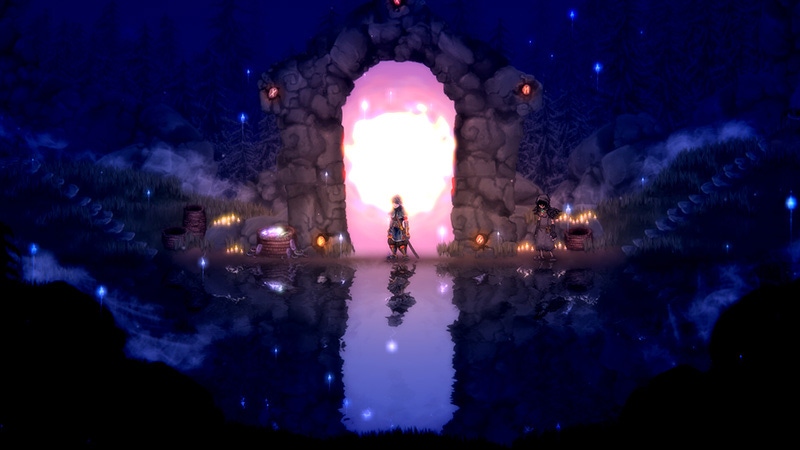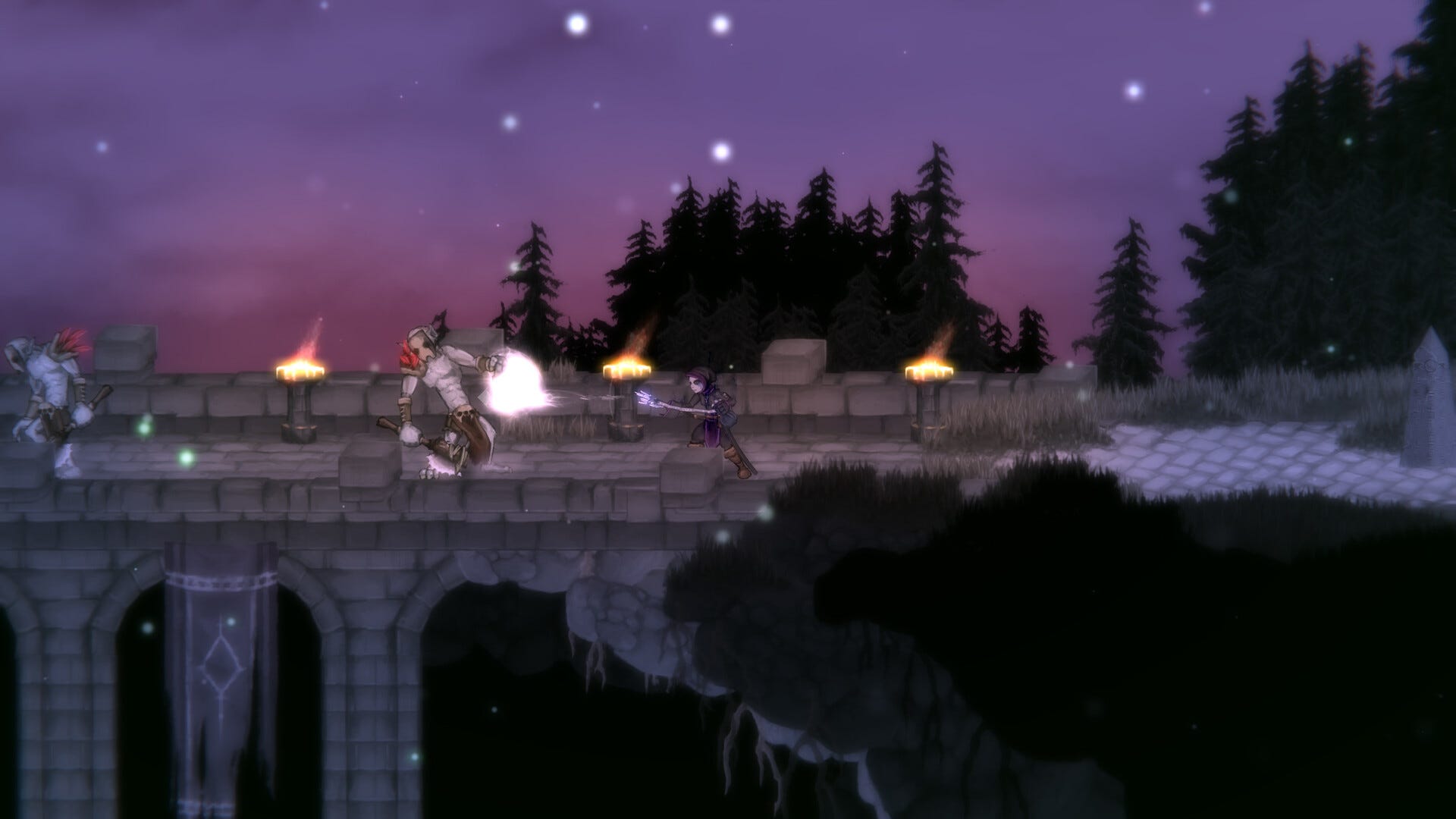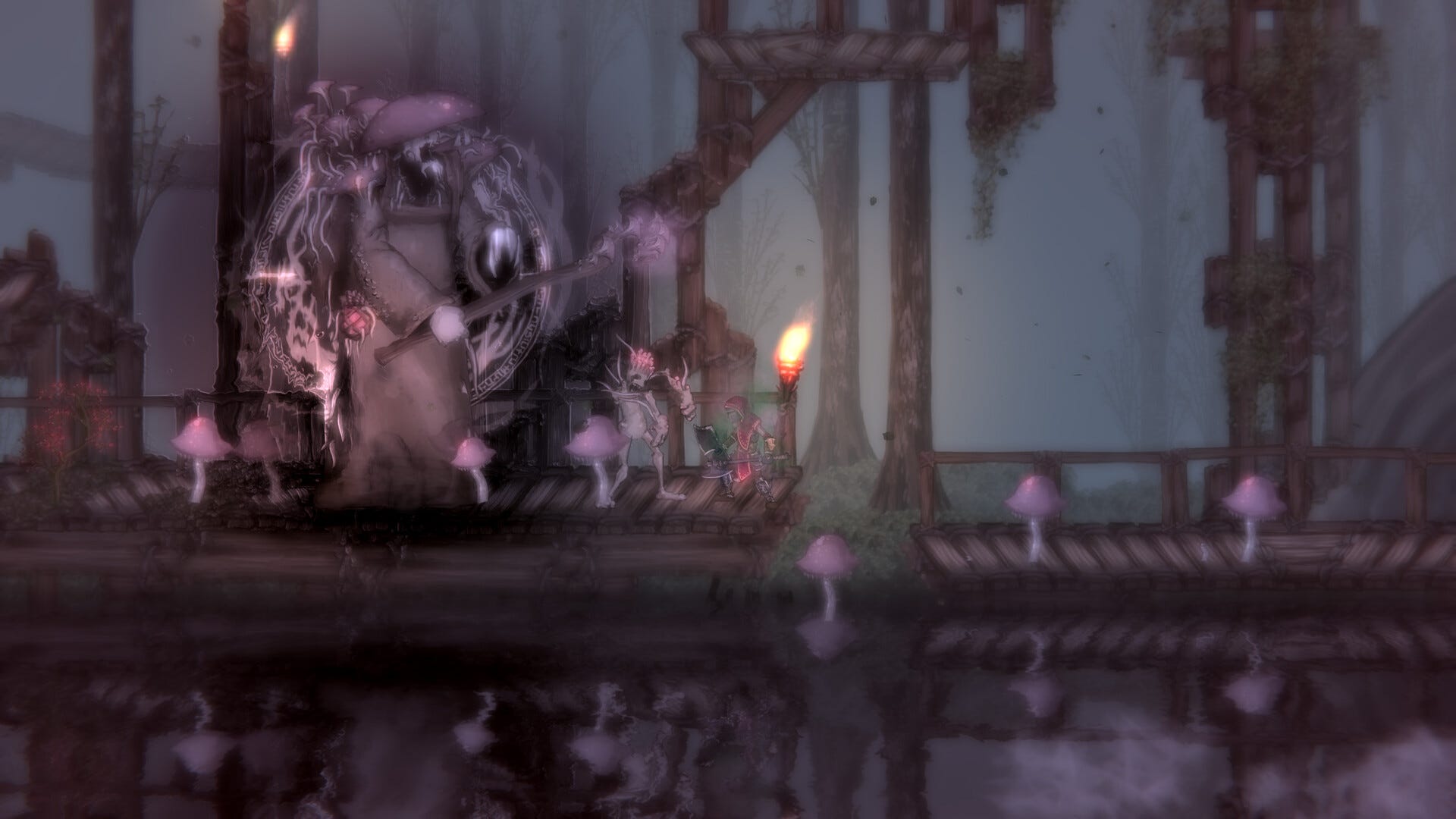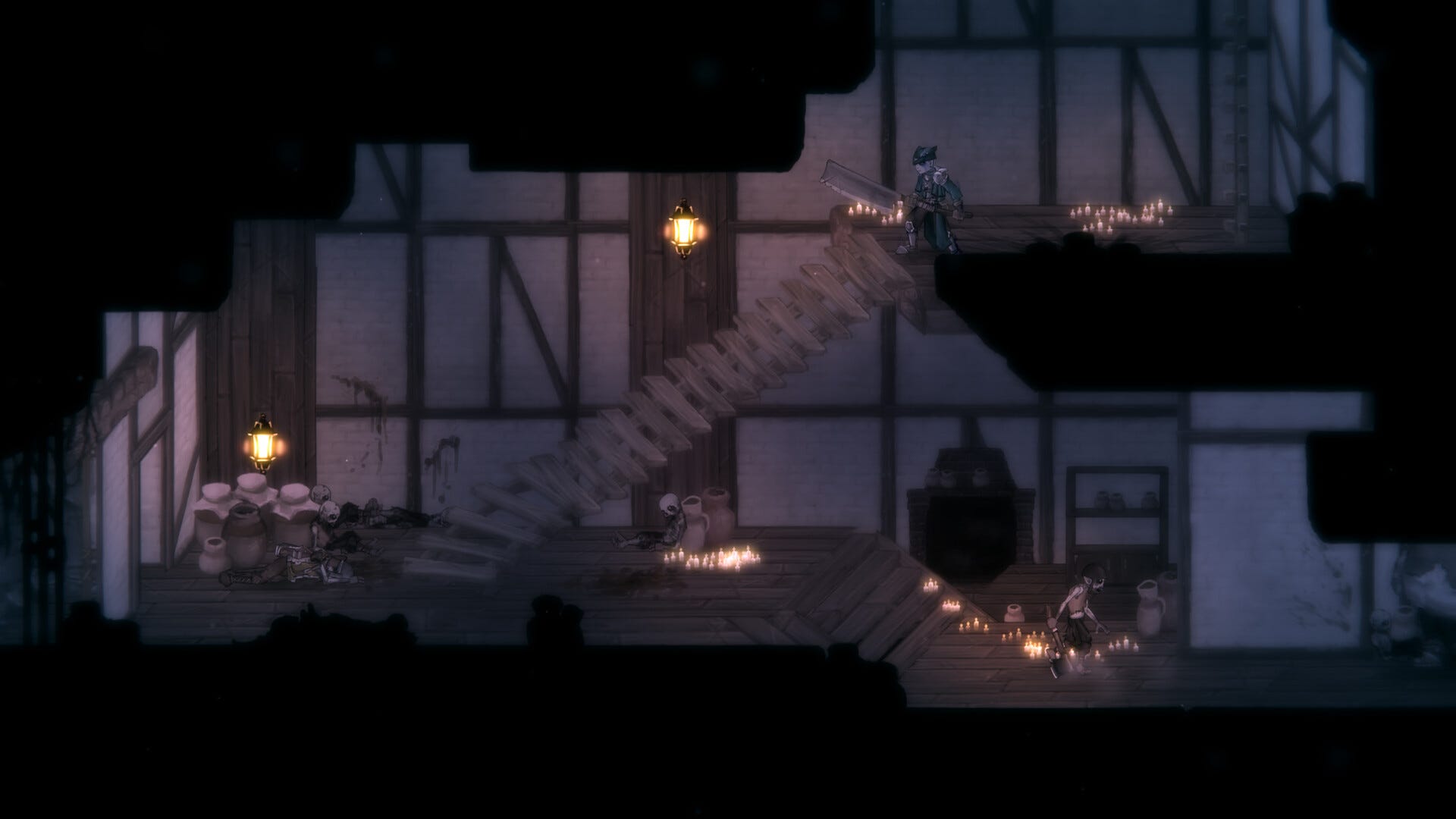Behind the monstrous challenge of "just adding multiplayer" to Salt and Sacrifice
Salt and Sacrifice adds multiplayer to the 2D Souls-inspired model of Salt and Sanctuary. It wasn't an easy task.

Ska Studios struck gold in 2016 with the release of Salt & Sanctuary, an early entry in the "Souls-like" genre that wore its inspirations on its sleeve. The brutal combat and high-stakes cost of death and resurrection meshed nicely with an original ocean-inspired horror art direction that hammers home the fact that the sea is absolutely terrifying.
A less visible element of the game's success was its evolution out of the world of XNA game development that powered Xbox Live Arcade. Studio founder James Silva began his career as an indie developer on that platform, making cult games like The Dishwasher: Dead Samurai, and Charlie Murder on a game development framework that would fall out of Microsoft's good graces with the move to the Xbox One.
Seven years later the studio is back with Salt and Sacrifice (which just launched on Steam and Nintendo switch after an exclusive stint on the Epic Game Store), and lo and behold, Ska Studios is still carrying the torch of XNA-inspired game development—with its co-owners flexing their muscles with new co-op multiplayer mechanics that let players take on the game's monstrous bosses together, all while navigating complex ability trees aligned to the game's factions. All of this was done on the back of the MonoGame framework—one of two code frameworks that lets developers work in an XNA-inspired environment.
In a call with Silva and Ska Studios co-owner Shane Lynch, the pair shared some insight on what it took to make a highly polished multiplayer game with so few resources—and mused on the notion that indie developers who might be searching for new game engine options may want to adopt XNA-inspired frameworks for their next game.
It's never as easy as "push button, add multiplayer"
Salt and Sacrifice's multiplayer features exist largely in part because of the work of Lynch, who hooked up with Silva after the Ska Studios founder sent him an early build of the game. Lynch had commented that the game would be great with multiplayer and Silva (who had neither the experience or time to implement it) joked that Lynch should just do it.
A couple weeks later, he did just that. "It took us no time at all to get something set up with two players onscreen," he recalled. Lynch was working for a medical startup at the time after years of working at Xbox. Lynch and Silva had been friends since crossing paths in the world of Xbox Live Arcade indie games. "I joined the corporate world, and he made the indie dream take off," Lynch quipped. Enthused at the idea of implementing multiplayer, Lynch left his job and joined Silva at Ska Studios.
Silva said he often looks back at those two weeks and thinks of that time YouTuber PointCrow offered up $10,000 to anyone who could make a multiplayer mod for The Legend of Zelda: Breath of the Wild. PointCrow showed off the mod in action (though was demonetized by Nintendo for doing so), and would casually point out that it was up to players to sync up quests and otherwise make the multiplayer experience actually fun.

"All they had to do after [he] did the one percent of the work was do the other 99 percent of the work," he joked. It was a similar experience making multiplayer work in Salt and Sanctuary—Lynch's original prototype worked great, but what would follow was two years of polish and tuning the game to properly work for solo and co-op players alike.
"We actually go much further with multiplayer than the Souls franchise," Lynch observed. The multiplayer experience in FromSoftware's games is still centered around the single-player adventure of one player. Progression is locked to the host of the multiplayer game, players can only summon each other within certain level ranges, and while playing with a friend, you have to keep an eye out for invading enemy players eager to ruin your day.
It's a much easier process to play with friends in Salt and Sacrifice. "I don't want any of that," Lynch said with some exasperation. "At any point, I don't care where you are in the game, I want you to join up, I want you to be able to progress together. If you guys kill this boss, it counts for both of you. If your buddy has not killed that boss, that boss is there and is ready to be killed."
"The idea is 'zero barriers, but also you can summon random people.'" Players are able to turn on what he called "full co-op" and summon a random helper player—and in doing so, open themselves up for invasions by other players (there are other mechanics at play that let solo players open themselves up for invasion as well)."
Lynch wanted to have it all—but his ambition caught up with the pair at the end of the project. "During the last six months of development I was regretting how many factions and things [Silva] put into the game," he said with a groan directed at his colleague.
The pair explained they cut an entire faction from the game as well as a boss battle that would be taken over by an enemy player character—along with any number of other features that were placed on a backburner that would never be ignited.
Adding players to any game also means that game features like combat difficulty, area traversal, and more must be tweaked and optimized. And as Lynch noted, the test matrix for the game grows exponentially.

The pair did have a some data they could share about scaling enemy health and damage for multiplayer. According to Lynch, the health of enemies in the game is increased by about 75 percent when more than one player is present, and the damage of boss enemies is increased just a bit.
"It's enough sometimes to make it that if the player is almost getting [killed in] one shot, then the player will die in one shot," he said. Silva said the idea behind that decision is that in co-op, players have a friend on hand who's able to revive them when they take that hit, so "one shot" doesn't mean "game over."
The pair noted that calibrating difficulty can be really difficult when they're such a small team playing the same encounters over, and over, and over again. Lynch was sure that bosses in co-op mode were "easier" than they'd hoped they would be. When the game launched, players said they were even harder.
"I've struggled with that my whole career," Silva acknowledged. "I think that when games come out that are really hard, it's more of a sign that the developers struggled with difficulty balance than it is any sort of clever intent."
But then Salt and Sacrifice players will gush about how much they love the game's difficulty, and it all seems worth it. Such praise can feel good—but it seemed from what Silva said that it can leave developers uncertain about what "difficult" actually means.
Ska Studios had a surprising run-in with Unity's Runtime Fee
Ska Studios' XNA heritage made us want to pick their brains about what the world of post-2023 indie game dev looks like. Though Unity's previously announced Runtime Fee is not as likely to shake up the income of indie developers who hit big as it was before, it's still left developers wary and possibly interested in finding a new home in the world of open-source tools. Silva has been using iterations of the same XNA-based tools he was using as far back as his XBLA days, and he joked that some code in those tools is now over 16 years old.
It turns out Lynch and Silva were impacted by the Runtime Fee announcement. That's because Lynch re-implemented MonoGame into Unity in order to create a higher-performing port of Salt and Sacrifice for the PlayStation 5. The project was so successful they used that process again for the just-released Nintendo Switch port.
Remember, Salt and Sanctuary was a successful game on Steam. If Salt and Sacrifice hit that same level of success, Ska Studios would have been subject to a per-install fee based on Unity's initial announcement. Silva recalled doing the math on how much free giveaways would now cost the studio against the possible marketing boost they might provide, and not being sure if it was worth it.
Lynch recalled that the studio did a promo for Salt and Sanctuary back in the day and saw a high number of downloads during the course of the promo. He used that data as a reference point for how much the Runtime Fee could have cost and the results were shocking. "We would have lost so much money," he said.
He recalled that said promo resulted in 1.7 million downloads of the game. "The numbers just add up real quick."
Unity's changes to the Runtime Fee program that kick in with the 2024 version of Unity's LTS won't impact Ska Studios because Lynch and Silva plan to remain on their current version of Unity for the purposes of supporting Salt and Sacrifice. But the experience left them rattled.

Silva remembered spending years kicking himself for not learning how to use Unity. Lynch said he'd been very careful when he started using Unity, and had consciously avoided building any tools that would require Silva to jump out of MonoGame. Both seemed to look at the September fiasco as a near-miss for their studio, and reinforced their desire to stay firmly in the world of MonoGame.
Do they think developers looking to move away from Unity should join them in making use of the XNA-inspired tool? They were both pretty positive about the idea. Lynch said it shouldn't be that difficult for more programmer-focused developers who weren't using all of the visual tools in Unity. "The transition might even be better for them because you don't have to run all this extra stuff—you're just running Microsoft Visual Studio," he mused. "The art side—it's a little more difficult. When you get into the animation tools and everything, they're not going to be there."
It was Silva's long-maintained toolset that kept that sticking point from being a problem from them, he noted. Silva himself was surprised to see so much of the indie dev world flock to game engine Godot, which garnered a lot of attention in the weeks after Unity's initial announcement.
The Terraria developers' support for Godot particularly tickled him because Terraria was originally made in XNA (developer Re-Logic did also announce support for FNA, the other XNA-inspired library). Both should serve the needs of developers who want to follow in Ska Studios' XNA-inspired footsteps.
Lynch and Silva's stories from the making of Salt and Sacrifice shine a light on how smaller developer teams can absolutely make games inspired by industry heavyweights like the Dark Souls franchise. It also spotlight how the challenges of game development can have a deep impact on teams as small as two people.
Read more about:
FeaturesAbout the Author(s)
You May Also Like













